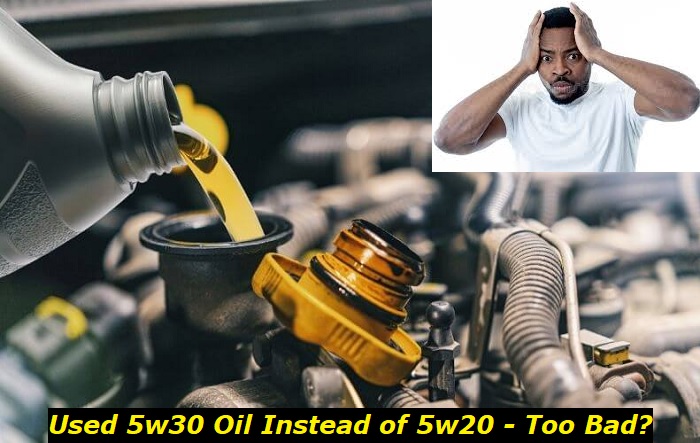Have you ever mistakenly put the incorrect type of oil in your engine? If so, it can be an unnerving feeling. You are likely questioning whether any damage has been done to your car and what effect this error will have on its performance. Fortunately, using a different weight of oil won't necessarily cause permanent harm to your vehicle - however, there may still be potential risks associated with this mistake.
Oil viscosity problems highlights
- Level of urgency:medium
- Average mileage:not related to mileage
- Repair cost:$250 - $350
- DIY repair:possible
- Commonreasons:wrong oil, wrong mechanic's advice
- Ifignored:reducing the lifespan of the engine
- How to solve:justchange the oil and use the recommended or OEM type

How Do You Know What Weight of Oil Your Car Needs?
The first step to determining the weight of oil your car needs is to check your owner's manual. Your vehicle manufacturer will recommend a specific type and weight of oil for you to use in order for your engine to perform at its best. This recommendation can usually be found under the "maintenance" section in the owner's manual.
Another way to determine the oil weight your car needs is to check with your local mechanic or auto parts store. An experienced mechanic will be able to give you advice regarding the best type and weight of oil for your vehicle. Additionally, many auto part stores have helpful staff that can provide information about what specific oil weight is recommended for your car.
Finally, you can use online resources to find out what weight of oil your car needs. Most vehicle manufacturers have websites that list their recommended oil weights for different models and makes of cars. You may also be able to find helpful information on third-party websites dedicated to car owners.
Regardless of which method you choose, it's important to determine the correct weight of oil for your car to ensure that your engine runs optimally.
What Is the Difference Between 5w20 and 5w30 Oil Weights?
The major difference between 5w20 and 5w30 oil weights is in the viscosity. Viscosity measures how well a liquid will flow, with higher viscosities indicating thicker liquids that won't flow as easily. The first number in the two oil weights - "5" - indicates how easily the oil flows at cold temperatures, while the second number - "20" or "30" - indicates how well the oil flows at hot temperatures. 5w20 is a thinner oil that flows more easily in cold temperatures, whereas 5w30 is thicker and will flow better in hot conditions. Generally speaking, 5w30 oil will provide better overall protection in mild climates, while 5w20 is recommended for cold temperatures.
It's important to note that because of the differences in viscosity, using one type of oil when your car requires another can have a negative effect on your engine's performance over time. If you're using an oil with a higher viscosity - like 5w30 instead of 5w20 - your engine won't be able to draw oil up quickly enough when it's cold, which can cause problems with lubrication.
These issues can be avoided by using the correct weight of oil in your car. However, if you have already made a mistake, it may not be necessary to take your car in for maintenance right away. Let's dive deeper into this issue.
Can You Use 5w30 If Your Car Needs 5w20?
There are different opinions on this issue among car owners and mechanics, but generally speaking, it is safe to use 5w30 oil in a car that requires 5w20 oil. This is because the 5w30 oil contains a higher viscosity than the 5w20 oil, so it may be able to lubricate better and protect your car's engine better against wear and tear at higher temperatures.
It is also important to remember that while 5w30 will work in a car that requires 5w20, it may prevent the engine from achieving maximum fuel efficiency. If you're looking for optimal performance, it is recommended to use an oil that matches the viscosity of what your car manufacturer recommends.
However, if you cannot find an exact match or are in a pinch and need quick lubrication, 5w30 can be used safely; just be sure to keep an eye on it and replace it when necessary.
It is always important to check your car's manual for the manufacturer's specifications before using any oil on your engine. It is also recommended that you consult a professional mechanic in order to get the best advice for your specific vehicle.
Remember that putting the wrong oil in your car voids the warranty, so it's important to make sure you use the type of oil your car needs.
So is it too bad to use 5w30 when your car needs 5w20? In short, it can be done safely but is not recommended if you're looking for maximum performance.
How To Check Oil Level And Change Oil?
Checking your car's oil level is important to make sure that your engine has the right amount of oil and is running optimally. To check your oil level, you need to first park your car on a flat surface and turn off the engine. Then, open the hood and locate your dipstick - this should be clearly labeled for easy identification.
Remove the dipstick and clean it with a rag before placing it back into its tube. Once done, remove the dipstick again and check the oil level. The oil should be between the two markings on the dipstick and should not be visible around the edges.
If you find that your car is low on oil, it's important to add more before operating your vehicle. You can either use a funnel or an oil pumping tool for this purpose - both of which can be purchased at an auto parts store. Once you've added the required amount of oil, replace the dipstick and check the level again to make sure that it is correct.
Once you have checked your car's oil levels and ensured they are where they should be, it's time to change the oil itself. This process can be somewhat complicated depending on the type of car you have, so it's best to consult a professional mechanic if you are unsure of how to do this. Generally speaking; however, you will need to drain the oil from your engine and then replace it with fresh oil that matches the viscosity recommended by your car manufacturer.
When changing your car's oil, it is also important to replace the oil filter as well. The oil filter helps to ensure that your engine runs smoothly and efficiently, so replacing it when changing the oil can make a big difference in performance.
Should You Mix Different Oils, And What Can Happen?
Mixing two different oils can be dangerous for your engine and is not recommended. Different oils have different properties, so mixing them together will not provide the optimal lubrication or protection that your engine needs. Additionally, if you mix oil weights that don't match what your car manufacturer recommends, it could lead to major problems with the engine's performance.
To avoid any issues, it is best to stick with the oil weight that has been recommended by your car manufacturer and make sure that you change the oil every 3,000 miles or as specified in your vehicle's manual. This will help ensure that your engine operates efficiently and effectively and that it lasts for many years to come!
Bottom Line
Determining the correct weight of oil for your car is an important part of maintaining and protecting your engine. While it can be safe to use 5w30 in a car that requires 5w20, it's best to stick with the weight that matches the manufacturer's recommendations for optimal performance. Be sure to check your vehicle manual or online for the correct weight of oil, and consult a professional mechanic if you have any questions.
About the authors
The CarAraC research team is composed of seasoned auto mechanics and automotive industry professionals, including individuals with advanced degrees and certifications in their field. Our team members boast prestigious credentials, reflecting their extensive knowledge and skills. These qualifications include: IMI: Institute of the Motor Industry, ASE-Certified Master Automobile Technicians; Coventry University, Graduate of MA in Automotive Journalism; Politecnico di Torino, Italy, MS Automotive Engineering; Ss. Cyril and Methodius University in Skopje, Mechanical University in Skopje; TOC Automotive College; DHA Suffa University, Department of Mechanical Engineering






Add comment